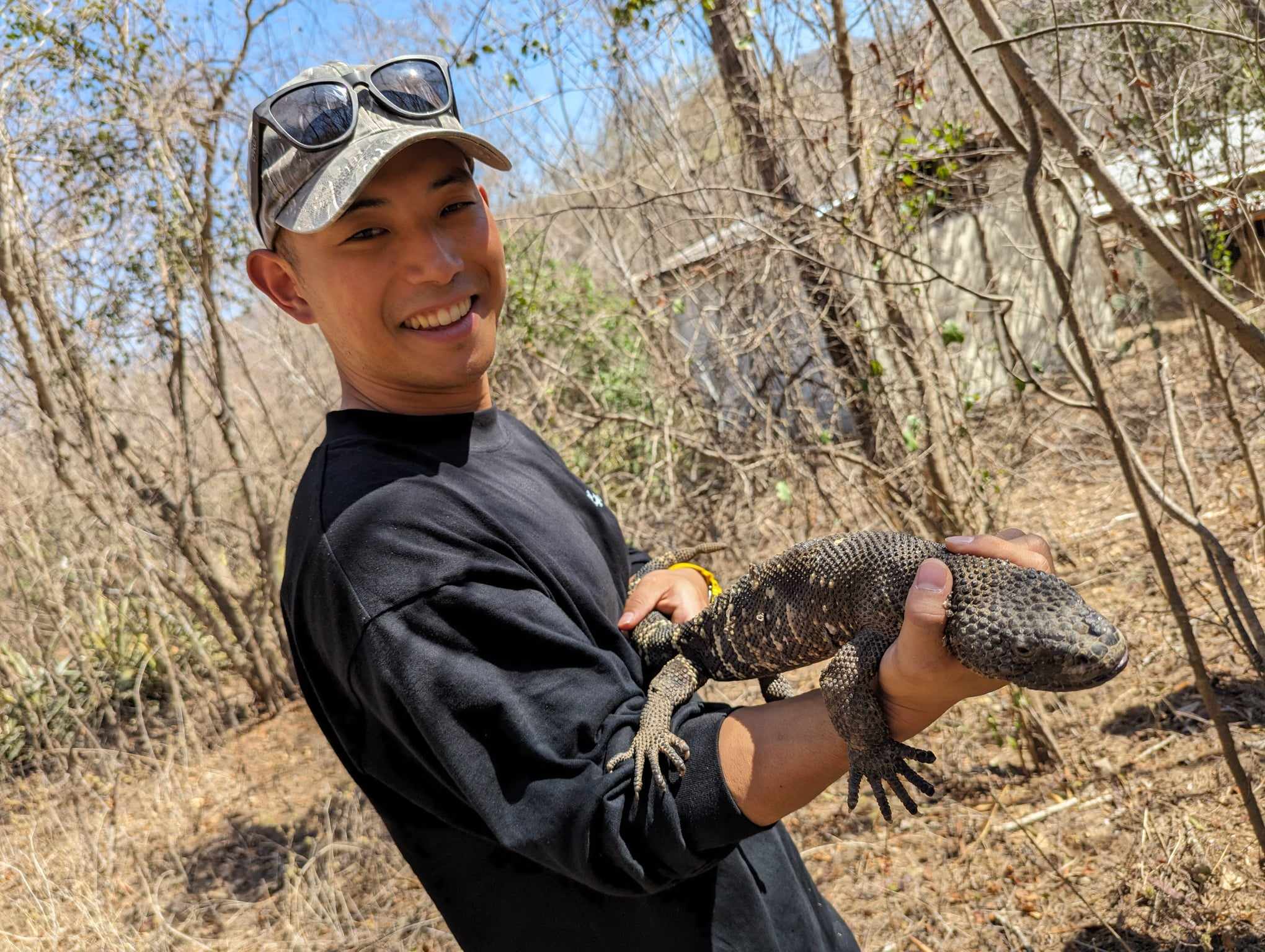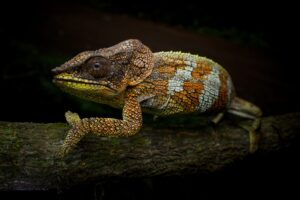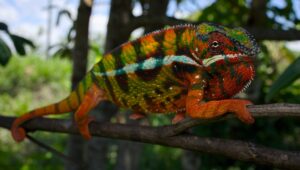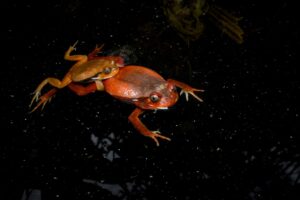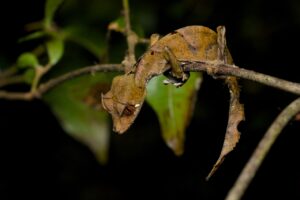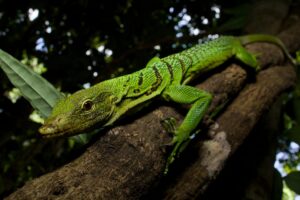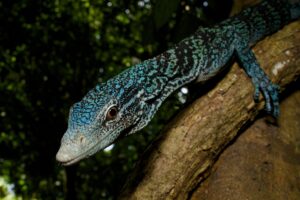This time, I’d like to introduce a terrifying yet fascinating snake we encountered in Colombia’s Chocó Rainforest — the Terciopelo (Bothrops asper), one of the most feared pit vipers in the world.
This rainforest, known as the second-wettest region on Earth, is truly a “jungle of rain.” Amidst the thick vegetation and constant rainfall, we came face to face with a snake so feared that locals say, “If you see it, you turn to stone.”
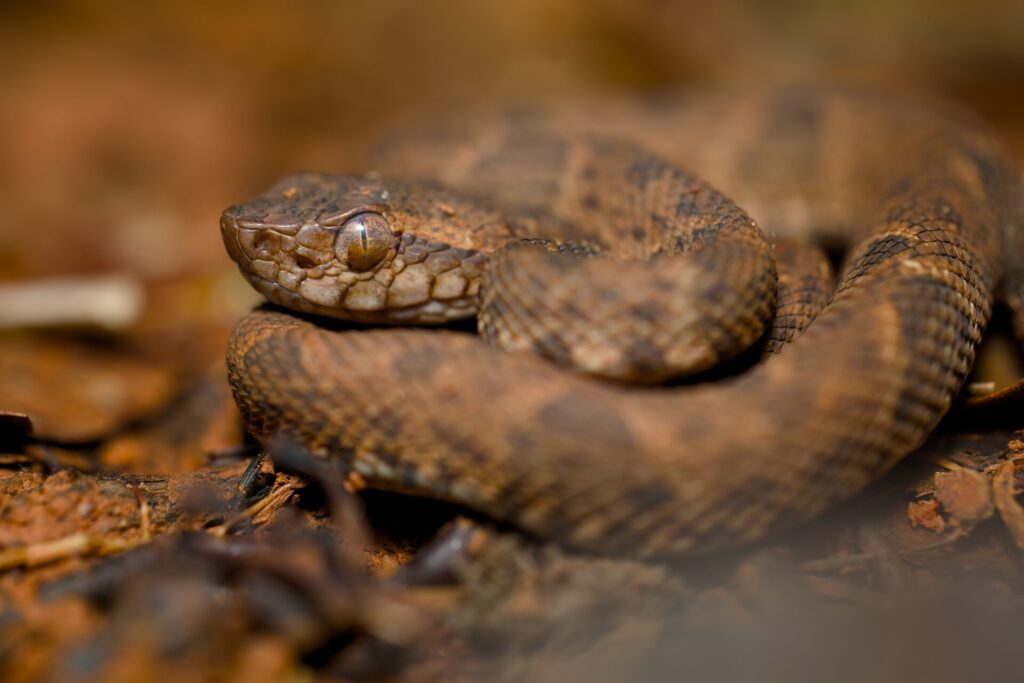
Scientific name: Bothrops asper
■ What is the Terciopelo?
- English name: Terciopelo
- Scientific name: Bothrops asper
- Family: Viperidae (pit vipers)
The Terciopelo is a species of pit viper widely distributed across Central and South America.
It is known for both the potency and quantity of its venom, which can cause massive internal bleeding and tissue necrosis. In some cases, a bite can be fatal.
Although its appearance is strikingly beautiful, the Terciopelo is deeply feared in local communities — often referred to as “the snake that turns you to stone.”
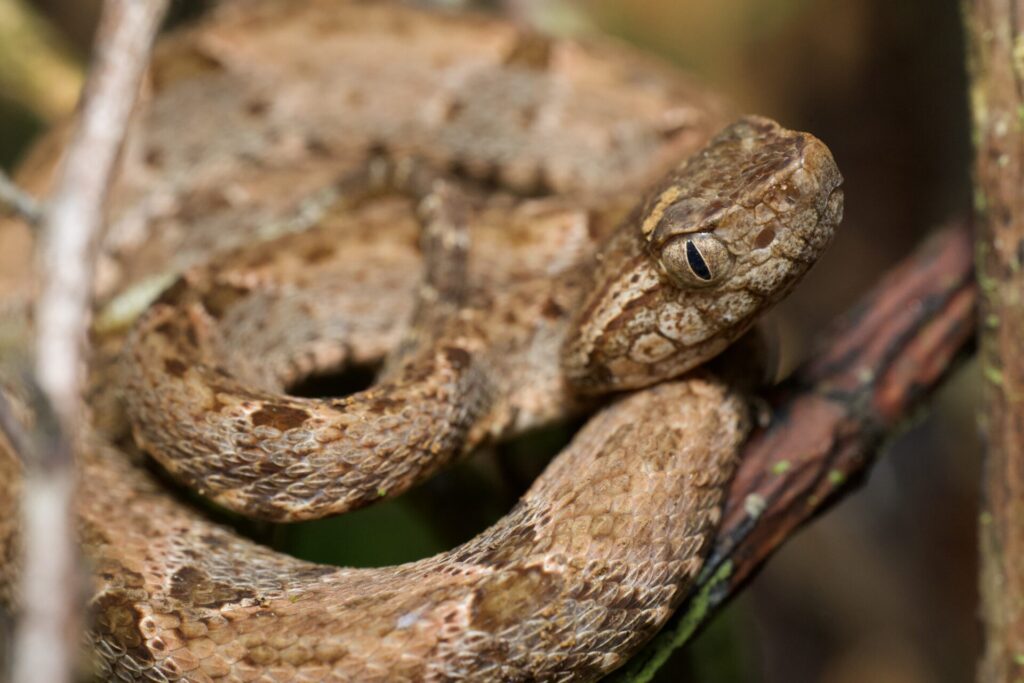
■ Master of Camouflage and Lethal Hunting Tactics
One of the Terciopelo’s most dangerous traits is its ability to perfectly blend into its surroundings — especially the red soil and leaf litter of the rainforest floor.
Even experienced herpers can easily overlook it. Local villagers collecting timber could unknowingly pass just inches from one without realizing the danger.
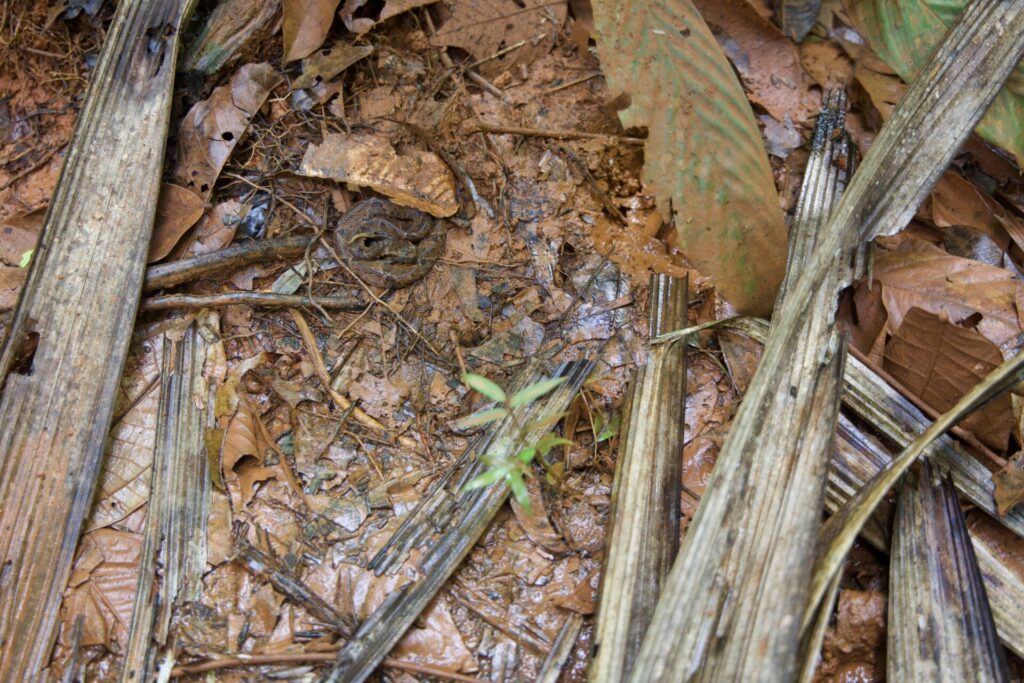
Another fascinating feature is the bright tip of its tail, which it wiggles like a worm to lure frogs, rodents, or other prey. This hunting strategy is called “caudal luring.” Once the prey approaches, the snake strikes with deadly speed.
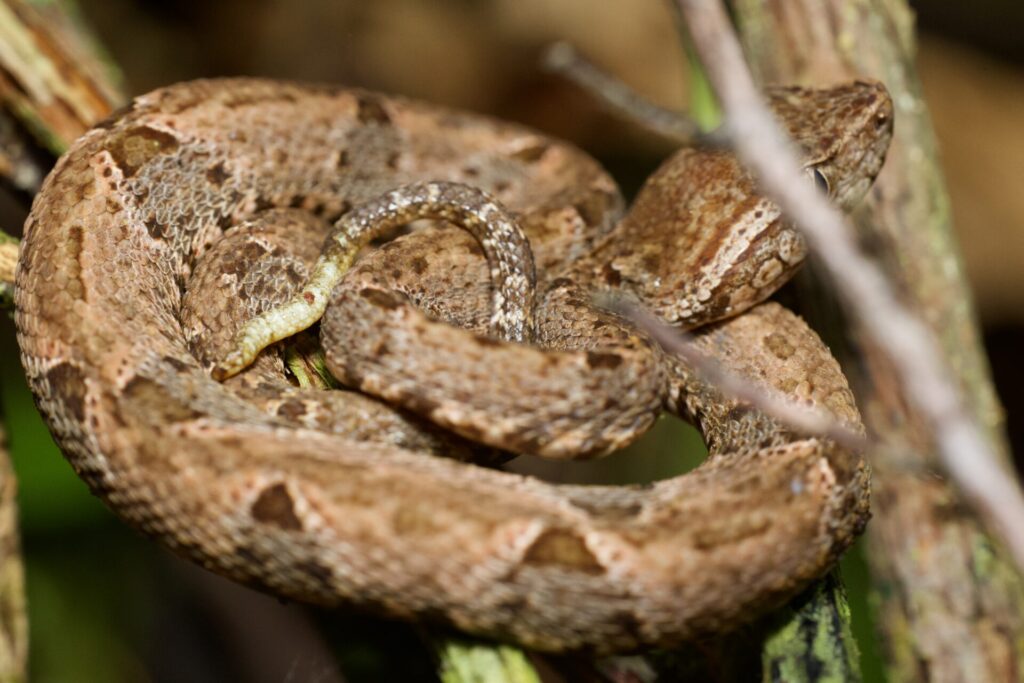
■ Feared and Killed — A Declining Species
Due to its reputation and real danger, the Terciopelo is often killed on sight by people who encounter it.
As a result, its population is reportedly in decline. Yet, this species plays a crucial role in maintaining ecological balance.
■ Toward a Future of Coexistence
It’s precisely because this animal is feared that understanding and learning about it becomes the first step toward coexistence.
At WildHerping, we aim to promote eco-tourism as a way to help people and wildlife live side by side.
We invite you to explore these incredible ecosystems firsthand.
By seeing nature with your own eyes, you might just change the way you see the world.


